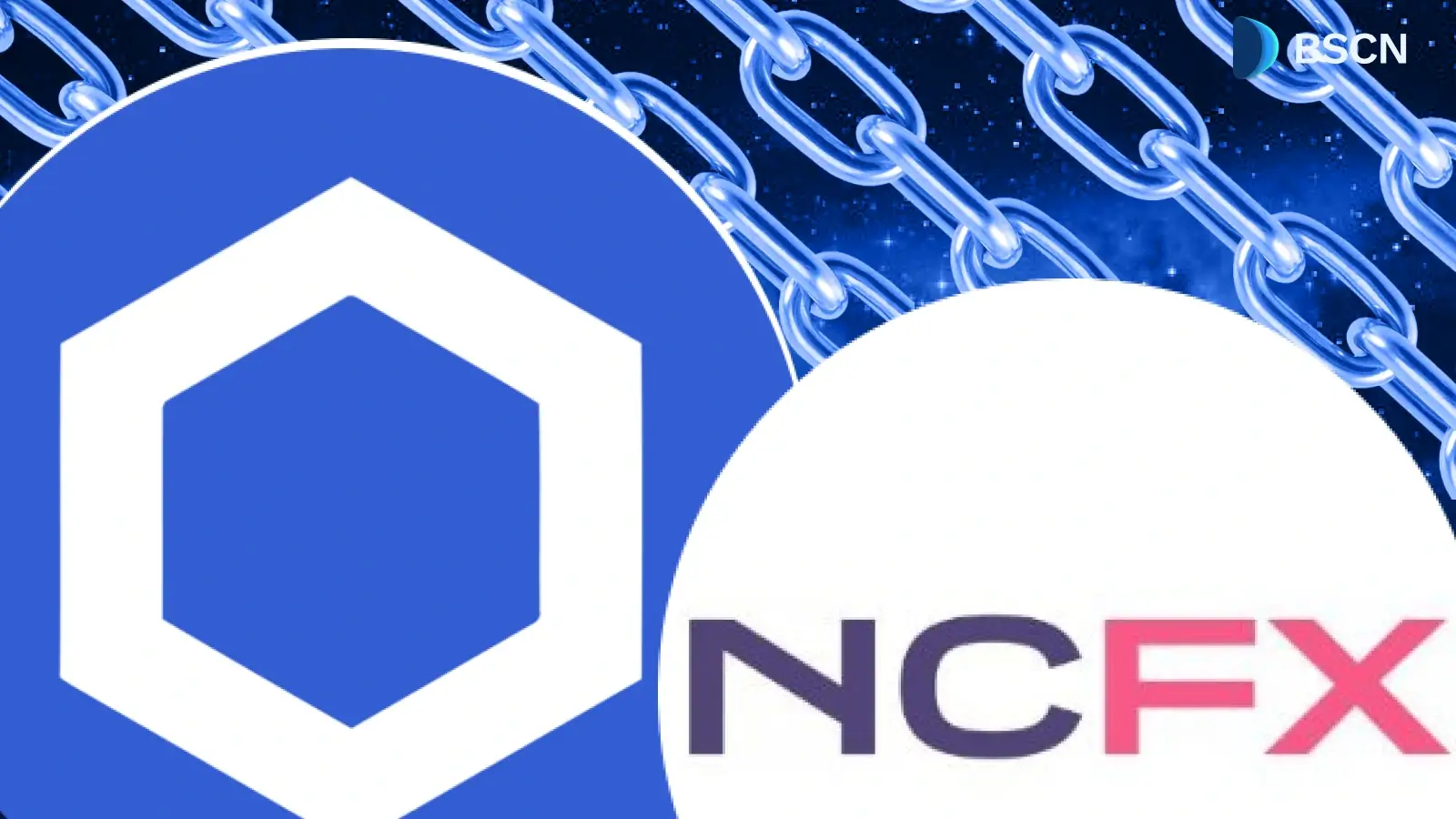News
(Advertisement)
Chainlink Remains 'Fully Operational' Despite AWS Outage

Chainlink's decentralized oracle network remained fully operational during the October 20, 2025, AWS outage, highlighting resilience against centralized infrastructure failures in crypto.
UC Hope
October 21, 2025
(Advertisement)
Table of Contents
Decentralized Oracle Network, Chainlink, stayed fully operational during a major Amazon Web Services (AWS) outage on October 20, 2025, that disrupted services across the internet, including several cryptocurrency platforms.
The outage, which affected the US-EAST-1 region in Northern Virginia, began on October 19 and lasted until the next day, causing increased error rates, latencies, and connection issues in services like EC2, Lambda, and DynamoDB.
The protocol’s X post on the day of the event emphasized that its data feeds, data streams, and Cross-chain Interoperability Protocol (CCIP) continued without interruption, highlighting the network's design to avoid single points of failure.
Despite today’s widespread cloud outage impacting much of the public Internet, Chainlink oracle services operated without interruption and remain fully operational.
— Chainlink (@chainlink) October 20, 2025
This reliability includes Data Feeds & Streams securing 70% of the oracle-enabled DeFi economy, CCIP enabling… pic.twitter.com/tHhQS1G6dd
How Did the AWS Outage Happen?
The AWS disruption originated from an internal failure in the health-check subsystem for network load balancers, which led to DNS routing problems and subsequent cascading failures. AWS's Health Dashboard recorded interruptions across 113 services, with full recovery reported by around 10:11 GMT on October 20.
Although services returned to normal by mid-afternoon, some residual effects lingered during the recovery phase. Analysts suggested that internal factors, such as potential expertise gaps at Amazon, may have contributed to the duration of the issue. This was not the result of an external attack, like a DDoS, but stemmed from infrastructure faults within AWS.
The outage had widespread effects, impacting platforms beyond cryptocurrency. Services such as Snapchat, Ring doorbells, Roblox, Fortnite, Venmo, and Crunchyroll experienced downtime, with users reporting app failures, server connection errors, and inaccessible websites.
In the cryptocurrency sector, the event exposed dependencies on centralized cloud providers. Centralized exchanges like Coinbase temporarily suspended operations due to the disruptions. Cross-chain protocols, including LayerZero, went offline, leading to bridge failures and user complaints about interrupted transactions. Other projects, such as Kasplex in the Kaspa ecosystem, traced their issues to AWS-hosted Cassandra databases and had to migrate to new nodes to restore functionality.
Impact on the Crypto Industry
The AWS outage reflected risks in the cryptocurrency ecosystem, where reliance on centralized infrastructure can lead to operational halts. For instance, LayerZero's downtime directly affected cross-chain transfers, with users unable to complete bridges during the disruption. This contrasted with Chainlink's performance, as noted in various X posts comparing the two. Historical precedents, like a 2023 AWS data center issue that impacted exchanges such as Binance and KuCoin, further illustrate these ongoing vulnerabilities.
In Decentralized Finance (DeFi), the event amplified concerns about oracle reliability, as oracles provide external data to blockchains for smart contract execution. Chainlink secures approximately $100 billion in DeFi markets and has enabled over $26 trillion in transaction value through its services. The outage also fueled debates on the need for protocols to minimize correlated risks, such as those from shared infrastructure providers.
Projects with heavy AWS dependencies faced criticism, while those with more distributed setups, like Chainlink, received endorsements in community memes and discussions urging others to "just use Chainlink."
That being said, the outage served as a stress test, validating the importance of resilient designs in handling real-world disruptions.
Chainlink's Infrastructure and Resilience
Chainlink operates as a decentralized oracle network (DON), connecting blockchains to external data sources through independent node operators. Its architecture incorporates multiple redundancies to maintain uptime. Professional node operators, including entities like Deutsche Telekom and Swisscom, are distributed across geographic regions and use various infrastructure providers, not limited to AWS. This setup helps avoid correlated failures that occur when multiple components rely on the same provider.
- Data delivery occurs natively on supported blockchains, without third-party bridges or relayers, reducing dependencies on external intermediaries.
- Decentralized offchain consensus in DONs aggregates data before onchain submission, eliminating single points of network-operation failure.
- Operators handle their own authenticated API connections to data providers, minimizing reliance on centralized data sources.
- Each deployment is chain-specific, touching only the blockchains it serves, which limits inter-chain dependencies and reduces correlated risks.
This design aligns with a fully decentralized model, featuring multiple servers, infrastructure providers, locations, and operators, in contrast to centralized systems with single instances of each or distributed systems that might have multiple servers and locations but only one provider or operator.
Chainlink's X post detailed these elements, stating that its platform was built to withstand single points of failure, ensuring mission-critical applications operate without issues.
Chainlink has demonstrated reliability in past events, such as the October 10, 2025, flash crash, where it delivered accurate data for $100 billion in DeFi liquidations. Protocols like Aave depend on Chainlink for features such as surplus value recapture (SVR) to manage maximum extractable value (MEV) during market volatility. The network holds ISO 27001 certification and SOC 2 Type 1 attestation, supporting its use in institutional settings.
Comparisons during the AWS outage highlighted differences with other protocols. While others failed due to their AWS dependencies, Chainlink's independent operations prevailed. This resilience has made Chainlink the standard for oracles and cross-chain infrastructure, securing 70% of the oracle-enabled DeFi economy and enabling billions in cross-chain value transfers via CCIP.
Conclusion
The recent AWS outage highlighted vulnerabilities in centralized infrastructure while confirming Chainlink's capacity to maintain operations through its decentralized design. Key elements, including independent node operations, native onchain deployments, and chain-specific isolation, enabled uninterrupted service for data feeds, streams, and CCIP.
This event reinforces the value of architectures that minimize single points of failure, as seen in Chainlink's handling of $100 billion in DeFi and $26 trillion in transactions. For cryptocurrency projects, prioritizing such resilience could reduce risks from external disruptions, emphasizing the practical benefits of distributed systems in real-world scenarios.
Sources:
- What Caused the AWS Outage: https://www.aljazeera.com/news/2025/10/21/what-caused-amazons-aws-outage-and-why-did-so-many-major-apps-go-offline
- Amazon Says AWS Cloud Service is back to Normal: https://www.reuters.com/business/retail-consumer/amazons-cloud-unit-reports-outage-several-websites-down-2025-10-20/
- Web2 Platforms like Reddit and Snapchat were affected: https://africa.businessinsider.com/news/a-common-error-appeared-to-cause-a-major-aws-outage-bringing-down-platforms-from/gzlm5th
- Chainlink Platform: https://chain.link/platform
Read Next...
Frequently Asked Questions
What caused the AWS outage on October 20, 2025?
The outage resulted from an internal failure in the health-check subsystem for network load balancers in the US-EAST-1 region, leading to DNS routing issues and cascading failures across services like EC2 and Lambda.
How did Chainlink remain operational during the AWS outage?
Chainlink's decentralized oracle network uses independent node operators across multiple providers and regions, native onchain data delivery, and chain-specific deployments to avoid single points of failure.
What was the impact of the AWS outage on cryptocurrency platforms?
Platforms like Coinbase suspended operations, LayerZero experienced bridge failures, and Kasplex required node migrations, exposing dependencies on centralized cloud services.
Disclaimer
Disclaimer: The views expressed in this article do not necessarily represent the views of BSCN. The information provided in this article is for educational and entertainment purposes only and should not be construed as investment advice, or advice of any kind. BSCN assumes no responsibility for any investment decisions made based on the information provided in this article. If you believe that the article should be amended, please reach out to the BSCN team by emailing [email protected].
Author
 UC Hope
UC HopeUC holds a bachelor’s degree in Physics and has been a crypto researcher since 2020. UC was a professional writer before entering the cryptocurrency industry, but was drawn to blockchain technology by its high potential. UC has written for the likes of Cryptopolitan, as well as BSCN. He has a wide area of expertise, covering centralized and decentralized finance, as well as altcoins.
(Advertisement)
Latest News
(Advertisement)
Crypto Project & Token Reviews
Project & Token Reviews
Comprehensive reviews of crypto's most interesting projects and assets
Learn about the hottest projects & tokens
















